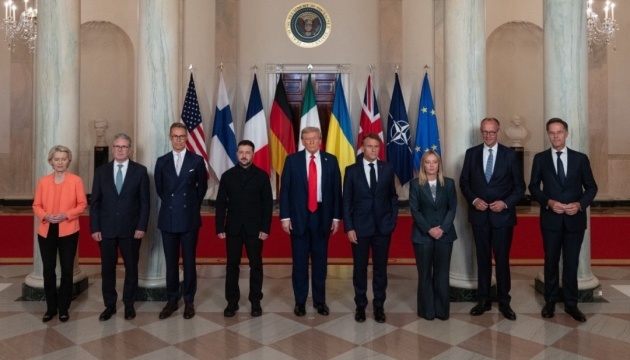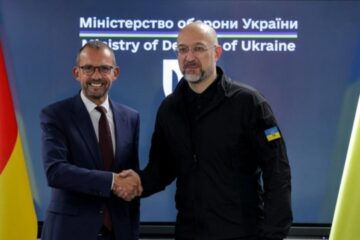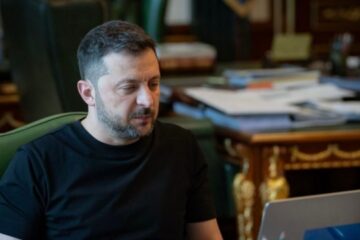The White House meeting on August 18 inspires cautious optimism, demonstrating that Western unity can be more effective than any “chemistry” with dictators
The visit by the Ukrainian president and European leaders to Washington on August 18 was anticipated with anxiety bordering on pessimism. Against the backdrop of the recent summit between Donald Trump and Putin in Alaska, which the American media criticized for being too accommodating to the Kremlin, there were real fears that Ukraine would be tempted into a disadvantageous agreement. That being said, the reality turned out to be more complicated and, surprisingly, more encouraging.
Instead of ultimatums and confrontation, the world saw an unprecedented demonstration of transatlantic unity that seemed to force even an unpredictable politician such as Trump to change his rhetoric. The atmosphere of the meeting turned out to be warmer than expected. And although the key issues – the cessation of fighting, the format of the future peace agreement and security guarantees – are still awaiting final answers, the main result was that “the ice has broken”. The Western world demonstrated its ability to act as a united front, and Ukraine – to defend its subjectivity. That day didn’t saw final decisions, but rather the beginning of a complex conversation about the future, where the voice of Kyiv and its European partners sounded surprisingly confident.
WHAT WAS AGREED UPON AND HOW IT ALL WENT DOWN
The August 18 summit, which brought together an unprecedented number of world leaders all in one place at the White House, had a complex structure. First, Donald Trump and Volodymyr Zelensky held a bilateral meeting with delegations, after which they were joined by a powerful European team – European Commission President Ursula von der Leyen, NATO Secretary General Mark Rutte, French President Emmanuel Macron, German Chancellor Friedrich Merz, Italian Prime Minister Giorgia Meloni, British Prime Minister Keir Starmer, and Finnish President Alexander Stubb.
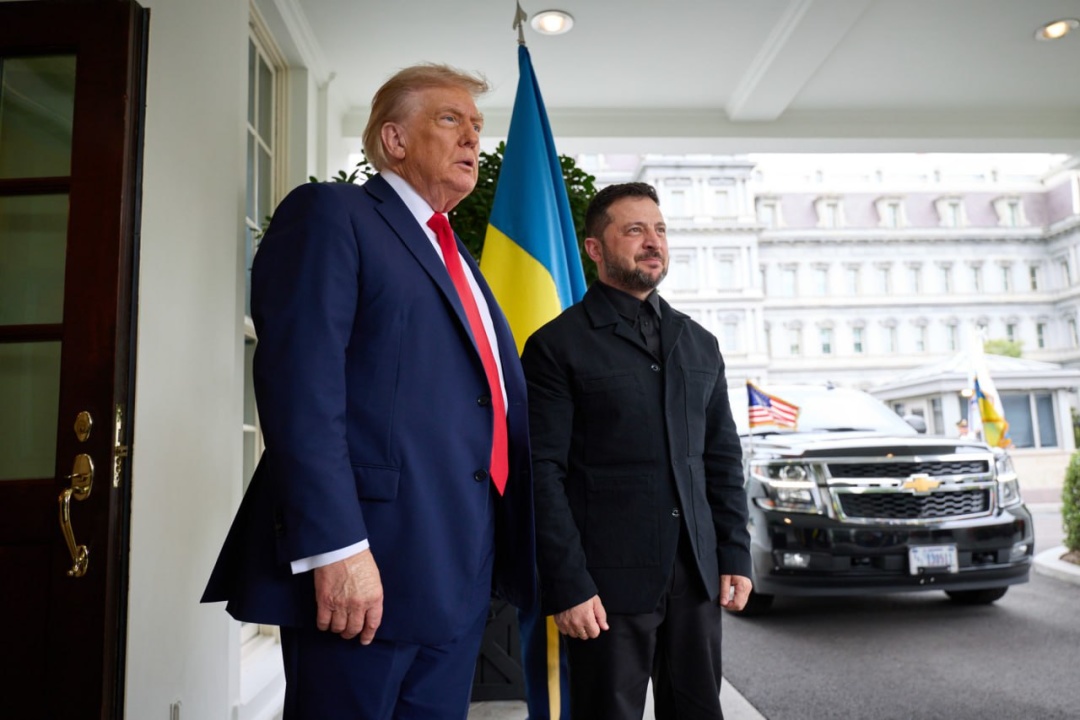
The key discussion revolved around the strategy for achieving peace. European leaders, including Merz and Macron, insisted on the need to first achieve a sustainable ceasefire. “I can’t imagine the next meeting taking place without a ceasefire, so let’s work on that and try to put pressure on Russia,” Merz stressed. Trump, for his part, pushed for an immediate fully-fledged peace deal, citing as an argument the “six wars” he has ended in this way in the six months of his second term.” He explained that while he liked the concept of a ceasefire, he had moved away from it because “it could be disadvantageous for one of the parties strategically.” By the way, he spoke out in the same vein after his meeting with Putin in Alaska. According to Reuters, Trump said during the Alaska summit, “Together, we decided that the best way to end the horrific war between Russia and Ukraine is to move directly to a peace agreement that ends the war, not just a cease-fire that is often not honored.” Obviously enough, this a repletion of Putin’s stance.
A considerable amount of attention was devoted to security guarantees for Ukraine. Italian Prime Minister Giorgia Meloni raised one proposal for a set of guarantees by Western nations modeled on NATO’s Article 5 mutual defense pledge. This would be outside formal alliance structures but might work the same way. Trump again stuck to Putin’s position: the United States does not support Ukraine’s accession to NATO. However, he promised “very good security guarantees” that European countries would provide under US coordination. When asked about the possible deployment of American troops to Ukraine, he answered evasively, “We will let you know about it later… We will be involved.”
President Zelensky presented Ukraine’s plan that includes procurements of US-made weapons worth about USD 90 billion (according to the Financial Times, the worth was set at around USD100 billion, which will be financed by European countries, – ed.). The president assured that there is a “political will and a political decision” on the part of the United States to be a party to and coordinator of these guarantees, and the document itself will be formalized within 7-10 days.
The surprise of the negotiations was Trump’s call to Putin, for which he interrupted a meeting with European leaders. After the conversation, the US president was posting on social media about a potential three-way summit he’d host soon that would also include Zelensky and Putin that could be preceded by a one-on-one between the Russian and Ukrainian leaders, and entrusted Vice President J.D. Vance and Secretary of State Marco Rubio with coordinating the preparations. German Chancellor Friedrich Merz said such a meeting could happen within two weeks, suggesting accelerating diplomatic momentum.
Meanwhile, other European leaders expressed doubts about Putin’s sincerity and courage. “I have great doubts about the sincerity of the desire for peace on the part of the Russian president. After all, as long as he believes that he can win the war, he will do it (…) Putin’s goal is to seize as much territory as possible,” the French leader Emmanuel Macron has said.
On top of that, humanitarian issues came under discussion as well: Donald Trump committed to help with the exchange of war prisoners and the repatriation of Ukrainian children.
ASSESSMENT BY INTERNATIONAL MEDIA: THE EUROPEANS HAVE FELT RELIEF
The international press reacted to the summit in a mostly restrained tone, noting both positive shifts and the lack of specifics. Many outlets, including ABC News, Reuters and The Guardian, emphasized that key issues remained open, and the details of the promised security guarantees were unclear. Reuters noted that the “White House’s warm welcoming of Ukraine leaves many questions unanswered”, while offering doubt as to whether the meeting “will actually contribute to the cause of peace” given how far apart the warring parties are.
CNN called the day “historic,” saying it echoed great political gatherings that ended World War II and built the modern world, but added that the path to peace will be difficult. Political analyst Michael Kimmage, author of the book “Collisions: The Origins of the War in Ukraine and the New Global Instability”, called what is happening “fantastic diplomacy” that is unlikely to last long as Trump continues to juggle promises without providing any details. “I don’t think what we are living through at this moment, where everybody seems a party to fantasy diplomacy, — I don’t think it is sustainable,” Mr. Kimmage told on CNN International. He furthermore warned that Trump’s strategy could shatter over its inner contradictions. Trump is “trying to be all things to all people, he is meeting with Putin and welcoming him with open arms and seeming to come to some agreement. He is speaking about security commitments to Ukraine; he is praising European leaders for supporting Ukraine.” “There are no details to what is happening. It’s all promises, and the promises on the surface contradict each other.” “You just wonder how long President Trump can juggle all these balls.”
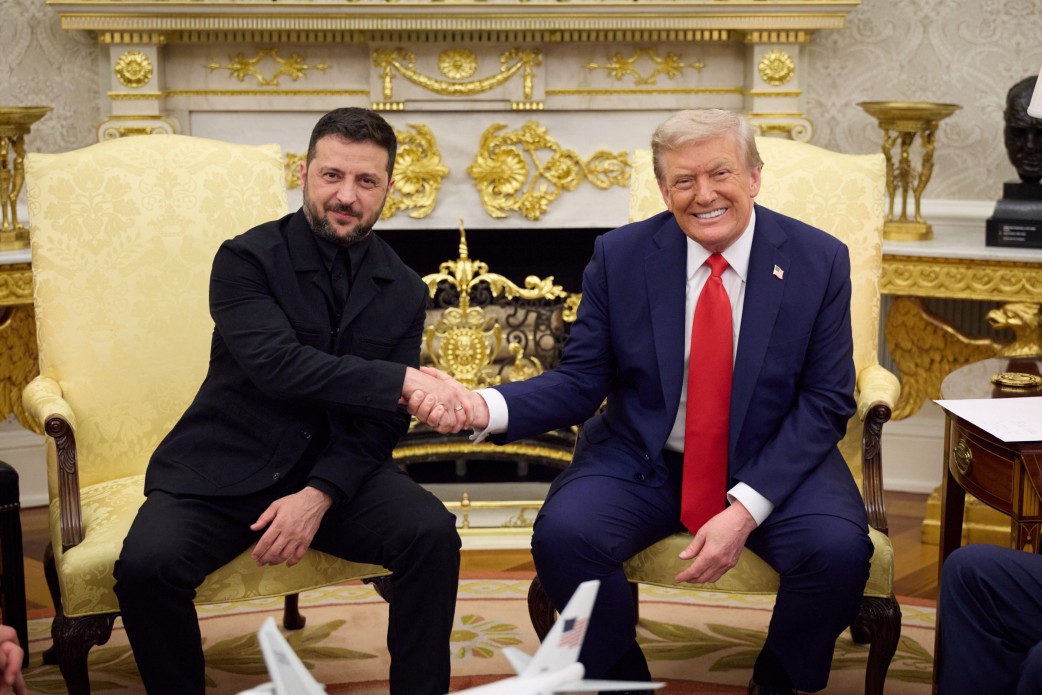
Politico emphasized that “the transatlantic alliance is holding up,” and the meeting itself was “a bad day for Putin, as Western unity has been restored and the United States is back on the team.” The New York Post also wrote about “positive signs of peace.” The German Der Spiegel noted that Europeans, who traveled to Washington with “some nervousness,” “simply felt relieved´ in the end, because the result was not a dictated peace, but hope for the beginning of a peace process. Other outlets drew attention to the fact that Zelensky and Trump managed to establish relations, avoid diplomatic incidents, and that the Ukrainian president once again demonstrated confidence, appearing not in a classic suit, but in his usual style, for which he even received an apology from a journalist who had previously criticized him for this.
EXPERTS: UKRAINE HAS ACHIEVED THE “MAXIMUM POSSIBLE”
Ukrainian experts are unanimous in holding that the main achievement of the gathering is not the drawing up of final solutions, but a change in the very atmosphere of dialogue and the restoration of unity of the West, which made it possible to avoid the worst-case scenarios.
Diplomat Vadym Tryukhan believes that Putin, without wanting it himself, ““achieved” a reconciliation between Europe and the United States.” The key result, in his opinion, is the “actual legalization of Ukraine on the political map of Europe,” where our state, together with its allies, acts as a united front. The expert especially notes the speed and highly unorthodox steps taken by European leaders. “Having smelled a real threat, they did not follow the traditional path – through bureaucratic procedures… They instantly called each other, coordinated, distributed roles and set off to Washington. And Trump could not resist their pressure,” the expert notes. According to him, the Europeans, together with Zelensky, fulfilled the minimum program: “they avoided confrontation and returned Trump to a more constructive position. This is a huge achievement that, perhaps, not everyone will immediately appreciate. But it creates a basis for further progress.”
Tryukhan also draws attention to the dramatic change in the rhetoric of communication, saying, “Sarcasm, annoyance, feelings of hostility have disappeared,” and the warm gesture of “hawk” J.D. Vance towards Zelensky was especially noteworthy. He separately notes the behavior of the Ukrainian president. A symbolic moment was that Zelensky “did not give in to pressure, neither did he try to please” on the issue of clothing, demonstrating confidence. In addition, he was well-prepared and, in a meaningful conversation, speaking without notes, conveyed to Trump the real picture on the Ukrainian battlefield. “The President of Ukraine tried to convey the real state of affairs: after more than a thousand days of war, Russia’s military managed to seize only about 1% of the Ukrainian land. This figure speaks for itself and it busted the myth of the “world’s second army,” Mr. Tryukhan said in a comment to Ukrinform. According to the diplomat, Zelensky’s readiness for any format of negotiations was also a strategically sound decision. Trump’s initiatives cannot be rejected, because “Putin will instantly exploit this position to his benefit.”
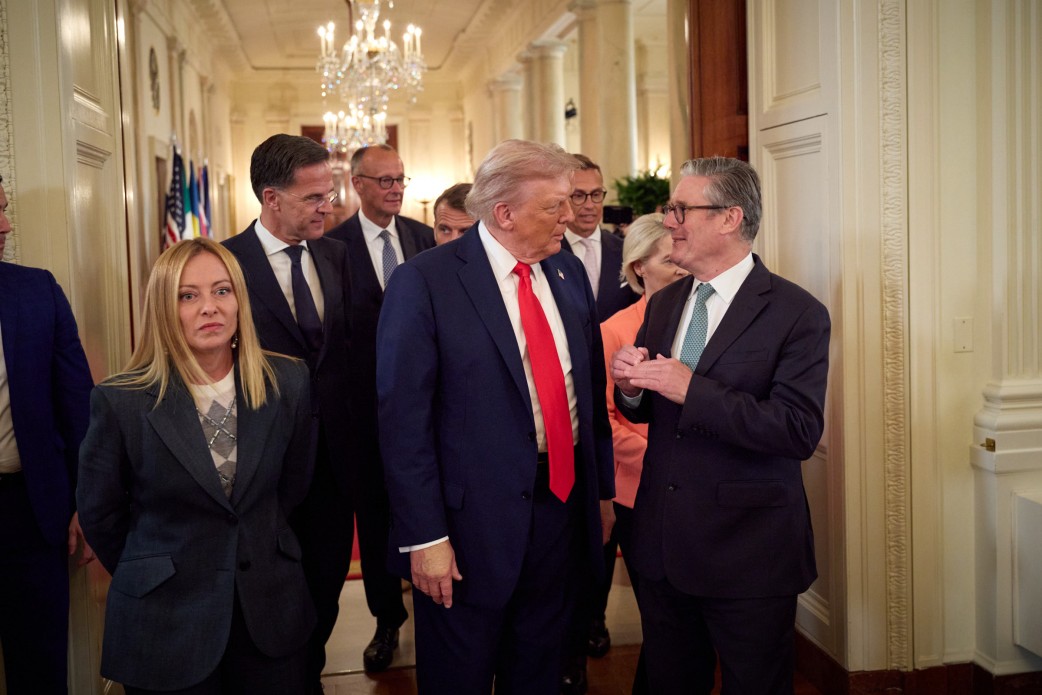
Political scientist Ihor Reiterovych calls the post-talks mood as “inspiring cautious optimism.” In his opinion, Ukraine, thanks to serious preparatory work, has achieved “the maximum possible.” “I completely agree with Chancellor Merz in that the expectations were the same, but the result turned out to be even better,” he says.
He considers the idea of meeting with Putin advantageous because it will force the Russian dictator to “publicly voice his vision of ending the war,” which he fears, or to show the world that it is Moscow who is blocking peace. The political analyst believes the key signal is Trump’s stated willingness to negotiate land swaps “referenced to the current frontline”. “In my opinion, this is really a key signal… It is not so much about exchanging territories, but about the possibility of agreeing on the current front line as a basic reference point,” the expert explains.
Overall, the visit was not a defeat, but not an absolute victory either, but a “working meeting” where the principle of “it’s easier to put pressure on Trump collectively” has worked out well. That is why this summit can be considered advantageous for Ukraine, Mr. Reiterovych argues.
According to the expert, the summit was aimed primarily at “bringing Trump back into the family” after his “Alaska U-turn”. And this was achieved not least due to the fact that “the American media… unleashed devastating criticism against Trump after the Alaska summit with Putin”, which forced the US president to change his rhetoric.
Political expert Vadym Denysenko believes that the key outcome of the meeting is that is “drew out certain contours of a future security agreement” and delayed the worst-case scenario involving the cessation of arms sales. He is also convinced that the Russians failed to disrupt the negotiations, and the key role in this was played by the American press, which stood as a united front against the results of the meeting in Alaska, which came as “cold shower for Trump”. Mr. Denysenko points out that the potential summit between Zelensky and Putin will nullify one of latter’s main “trump cards” – “the thesis about Zelensky’s illegitimacy”. At the same time, he points to the main negative point that the Washington meeting confirmed”: Russia has retained the opportunity to “conduct negotiations without a ceasefire”, and this was confirmed in Washington. Putin’s strategy, according to him, will be to continue to “flatter Trump and drag out the time”.
DID EXPECTATIONS COME TRUE, AND WHAT TO EXPECT NEXT?
The Washington summit has nullified the most apocalyptic scenarios. “There was no embarrassment, quarrel or high-profile fall-out occurred,” says Vadym Tryukhan. Ihor Reiterovych shares this opinion: “Apocalyptic scenarios? Definitely not.” Most predictions came true in that the meeting was neither a failure nor a breakthrough, and the main objective – to “bring Trump back” to the common Western line – has been accomplished. However, now a phase begins that will take even more meticulous diplomatic work and resilience on the battlefield.
A potential meeting between Zelensky and Putin remains the main intrigue. Despite Trump’s optimism, Russia’s reaction indicates an attempt to take a break. Vadim Tryukhan points to the statement by Putin’s aide Ushakov, who “did not mention a single word about Russia’s willingness for a full-fledged meeting,” but spoke only about “the possibility of increasing the level of the delegation.” This, according to the expert, indicates Moscow’s confusion and may be annoying to Trump, who is already accused of being weak. Vadym Denysenko also believes that the meeting is “still in limbo” and has “very little chance of achieving a meaningful result, because it is at this meeting where land swaps will be discussed.” Ihor Reiterovych is of the opinion that the Kremlin will not make decisions on that issue until after Putin’s meeting with Xi Jinping in Beijing due on September 3. At the same time, as the analyst emphasizes, it is vital for Ukraine to stick to its stance that “The negotiations will be with Putin directly, or no one else. This is the key point.”
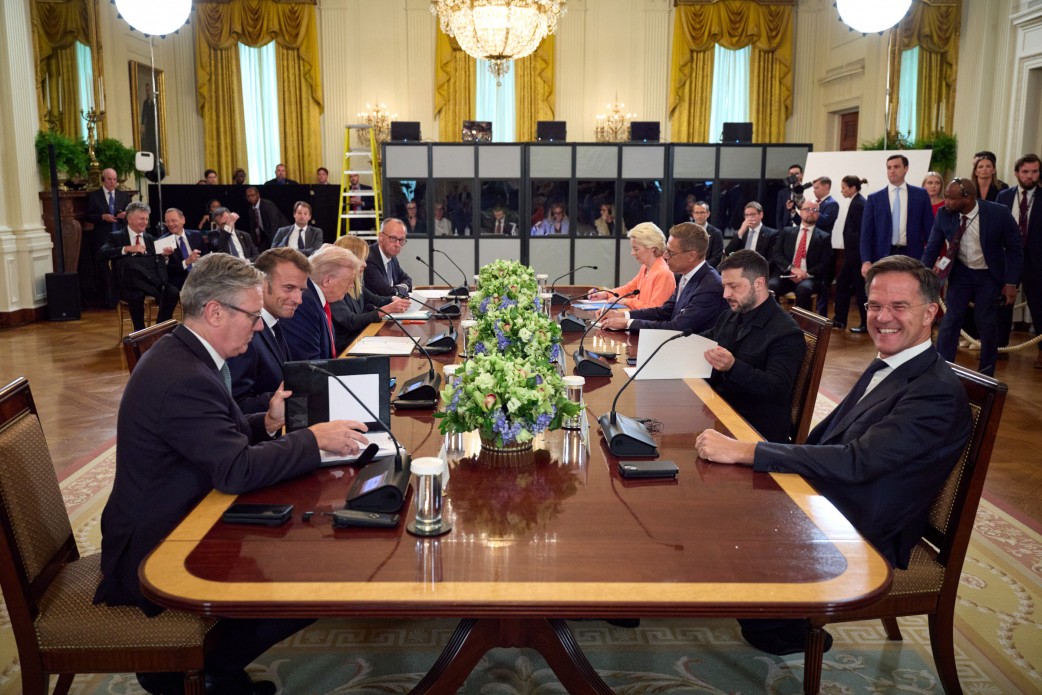
Another priority is the formalization of security guarantees for Ukraine. According to Ihor Reiterovych, Ukraine has to draw up a “clear and detailed document” within the next 7-10 days, which will spell out the specific commitments to be taken by each guarantor country. “Most likely, these will be bilateral agreements… Some countries may raise their security commitments to the level of Article 5 of the NATO Treaty,” he predicts. Mr. Reiterovych believes that the most preferrable scenario for Ukraine’s cooperation with the US would be the one similar to relations between the United States and Israel.
An interesting aspect that Vadym Denysenko drew attention to is Marco Rubio’s statement about the possibility of engaging countries from other continents into the guarantees. This may mean an attempt to “engage China,” which will make the issue of the war in Ukraine “part of global negotiations between Washington and Beijing.” “Peace agreements may not appear before the end of 2025 or spring of 2026,” the expert added.
As for further actions by Russia and the West, experts are unanimous: Russia will not change its tactics. It will continue to deliver massive strikes, perceiving the period until the fall as a “last chance.” “The challenge facing Ukraine remains as it is now: to withstand the pressure… and at the same time convince Washington… that Trump has chosen the wrong line of behavior,” says Vadym Tryukhan. According to him, it is only pressure of force that will force Moscow to the negotiating table. Ihor Reiterovych believes it crucial that Trump is kept “in the family” in the next 2-3 weeks, and the European leaders would be well advised to keep in touch with him by phone on a regular basis. If Putin refuses to meet, Trump will have to resort to tough sanctions so as not to appear weak in the eyes of the American establishment. Ultimately, as Mr. Reiterovych said in conclusion, everything “that will occur on the front in the coming days and weeks assumes special importance in that it will set up the backdrop for all the political processes that will follow”.
CONCLUSION NOTES
The August 18 summit in Washington did not end up in a historic breakthrough, but it was an important tactical victory for Ukraine and its European allies. A joint coordinated position made it possible to avoid the worst-case scenarios, reverse the destructive dynamics of dialogue with the Trump administration, and lay the foundation for further negotiations. The West demonstrated that its unity remains a powerful factor capable of influencing even the most unpredictable world leaders. Ahead lies a difficult path of formalizing security commitments, a diplomatic struggle for a favorable format of negotiations with the aggressor, and exhausting confrontation on the front. But what this summit proved is that when Ukraine and Europe act as one, their voice is bound to be heard even across the ocean.
Myroslav Liskovyh, Kyiv
Source: Washington Summit: How Zelensky and European Leaders Brought Trump Back "Into the Family"

